In the ever-evolving digital landscape, where the fight for online visibility becomes increasingly competitive, businesses cannot merely focus on their own strategies. They must also understand the tactics employed by their competitors. Just as a chess player anticipates their opponent’s next move, businesses, too, need to forecast the strategies of competitors to stay ahead in the SEO game.
Competitor analysis for SEO isn’t about replication but revelation. By delving deep into your competitors’ strategies, you can uncover gaps in your own approach, identify new opportunities, and craft a robust SEO plan that not only competes but excels.
This guide will take you on an insightful journey, breaking down the intricate process of competitor analysis for SEO. Whether you’re a budding startup or a well-established corporation, the insights gleaned from this analysis can be the game-changer in your industry’s SEO landscape.
The Foundations of Competitor Analysis
Defining Who Your SEO Competitors Are
The term “competitor” in the business world often brings to mind familiar industry names. However, in the realm of SEO, competitors can wear different hats. Your SEO competitors are websites and entities that vie for the same organic search visibility as you, targeting similar keywords and reaching out to the same audience. They might not necessarily offer the same product or service but are vying for the same digital space and user attention.
Why Traditional Business Competitors May Not Always Be Your SEO Competitors
It’s a common misconception to align SEO competitors directly with business competitors. In the traditional business landscape, competitor identification is straightforward. If you’re a coffee shop, your competitor is the other coffee shop down the street. However, in SEO, your competitors also include that blog discussing the best coffee blends or a review site comparing various coffee shops. They might not sell coffee, but they’re capturing the attention of your potential customers.
Case Study: ‘Tesla vs. EV Forums’ – Analyzing Unexpected SEO Competitors
When Tesla, the electric vehicle behemoth, began its digital journey, it anticipated competing against traditional car manufacturers. However, an unexpected competitor arose: electric vehicle forums and discussion boards. These platforms, while not selling cars, provided invaluable information, reviews, and user discussions about electric vehicles. Tesla soon realized that these forums dominated numerous keywords around electric cars. By recognizing these unexpected competitors, Tesla could then strategize to ensure its official content, such as launch events, blog posts, or product pages, gained higher visibility.

Tools to Start Your Competitor Analysis
In the vast ocean of digital marketing, several tools act as compasses, guiding businesses in their SEO competitor analysis journey. Each tool comes with its set of features, catering to various aspects of the analysis.
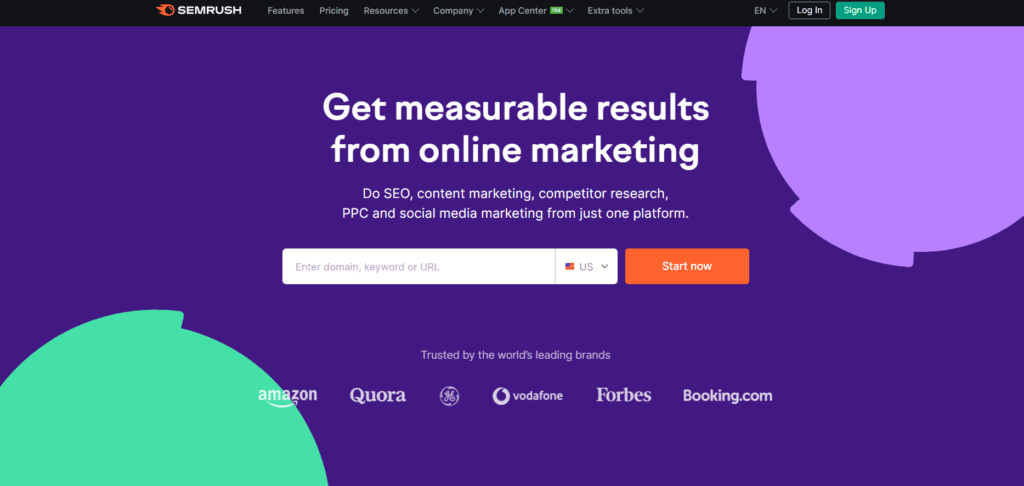
#1. SEMrush
Features:
SEMrush is a multifaceted tool that provides deep insights into your competitors’ digital marketing strategies. Its keyword research features let you uncover the phrases your competitors target, while the domain vs. domain analysis helps highlight gaps in your SEO strategy. Additionally, the backlink analysis gives a clear picture of the quality and quantity of incoming links.
Pros:
The breadth of features available in SEMrush makes it a one-stop solution. Its user-friendly interface is another significant advantage, allowing even those new to SEO to derive meaningful insights.
Cons:
The overwhelming amount of data can be a bit intimidating for beginners. Additionally, the pricing might be a barrier for smaller businesses or startups.
Pricing:
The Pro plan starts at $119.95/month, while more advanced features are available in the Guru ($229.95/month) and Business ($449.95/month) plans.
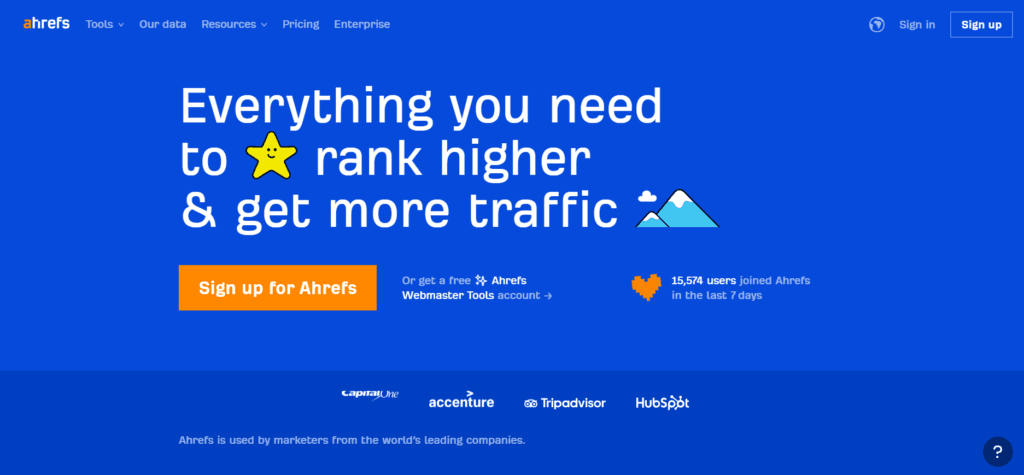
#2. Ahrefs
Features:
Ahrefs is renowned for its backlink analysis, providing one of the most extensive backlink databases in the industry. It also offers keyword research tools, site audit features, and competitor ranking profiles.
Pros:
Its intuitive interface and accurate data make it a favorite among SEO professionals. The speed and accuracy of its backlink checker are particularly noteworthy.
Cons:
It can be on the pricier side for smaller enterprises. Some users also feel its keyword difficulty score isn’t always reflective of real-world competitiveness.
Pricing:
Prices range from the Lite plan at $99/month to the Advanced plan at $399/month.
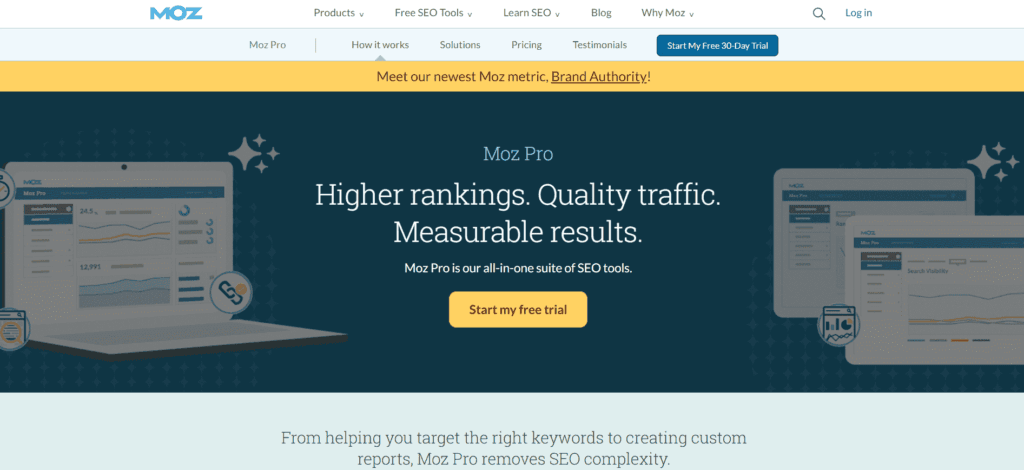
#3. Moz
Features:
Moz Pro offers tools to audit your site, track your rankings, and scrutinize backlinks. Its Domain Authority (DA) metric is particularly popular and widely accepted as a measure of site trustworthiness and authority.
Pros:
The platform is user-friendly with a supportive community and extensive educational resources. Their MozBar, a free Chrome extension, is also incredibly useful.
Cons:
Some users believe Moz updates its backlink index less frequently than competitors, potentially missing out on some newer links.
Pricing:
Starting at $99/month for the Standard plan and going up to $599/month for the Premium plan.
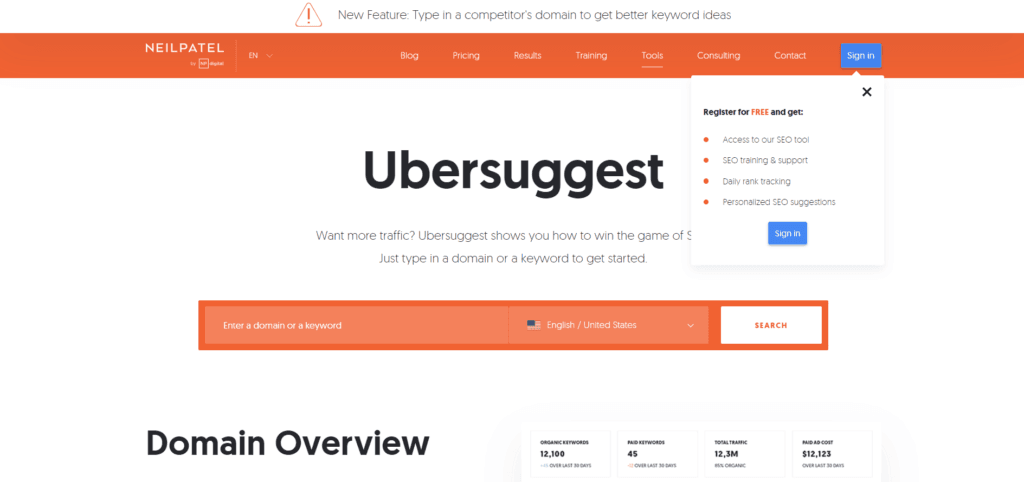
#4. Ubersuggest
Features:
Ubersuggest offers keyword suggestions, backlink data, and site audit features. The tool provides a clear, visual presentation of data, making it easier to understand and act upon.
Pros:
Its simplicity makes it a great entry point for those new to SEO. Additionally, the free version provides a substantial amount of data.
Cons:
Advanced users might find its features limited compared to other tools. The accuracy of its data has been occasionally questioned.
Pricing:
While there’s a free version, the paid plans start at $29/month.

#5. BuzzSumo
Features:
While BuzzSumo primarily focuses on content research, it’s invaluable for understanding which pieces of content in your industry are getting shared and discussed the most. It shows the most popular content for any topic or competitor.
Pros:
Perfect for content strategy, allowing users to see what topics resonate most with their audience. It also provides influencer data to aid in content promotion.
Cons:
It’s less comprehensive on the SEO front, focusing mainly on content and social signals.
Pricing:
Plans start at $99/month.
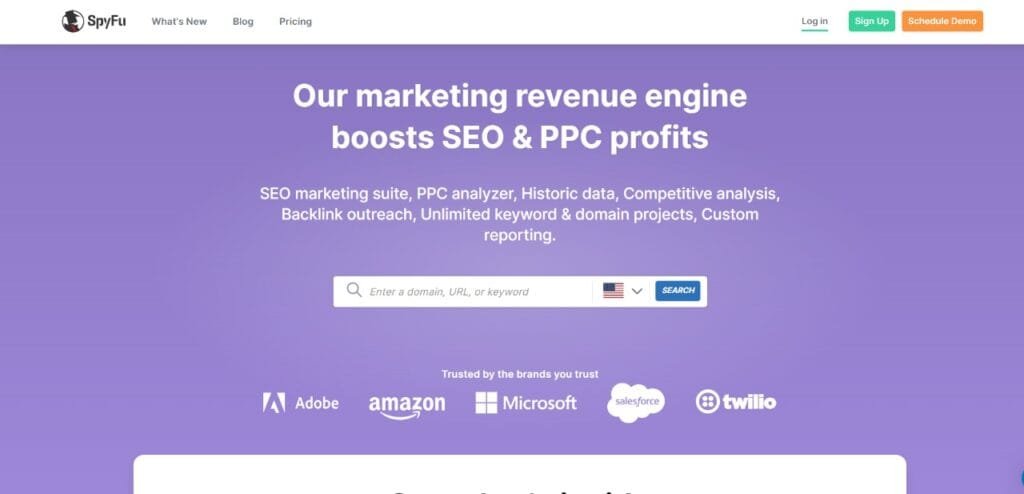
#6. SpyFu
Features:
SpyFu excels in competitor keyword research, allowing users to see every keyword their competitors have ever bought on Google Ads and every organic rank they’ve achieved.
Pros:
It provides an excellent historical data view, which is invaluable for understanding competitor movements over time. The interface is also quite user-friendly.
Cons:
Its backlink data isn’t as comprehensive as some competitors.
Pricing:
Basic plan starts at $39/month.
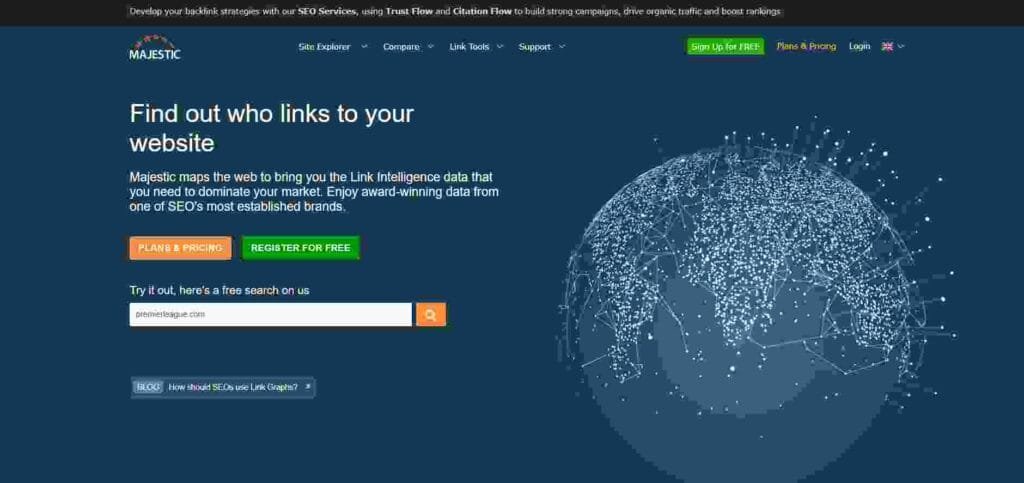
#7. Majestic SEO
Features:
Majestic is best known for its extensive backlink database. It offers users insights into how websites link to each other, allowing a comprehensive view of the web. Their proprietary Trust Flow and Citation Flow metrics help gauge the quality and quantity of backlinks.
Pros:
The tool excels in visualizing backlink profiles and understanding link building history. The historical data can be a goldmine when reviewing the evolution of any domain’s backlink profile.
Cons:
It primarily focuses on backlinks, which means users might need another tool for a more rounded SEO analysis. The user interface might seem a bit dated compared to other tools.
Pricing:
Plans start at $49.99/month for the Lite package.
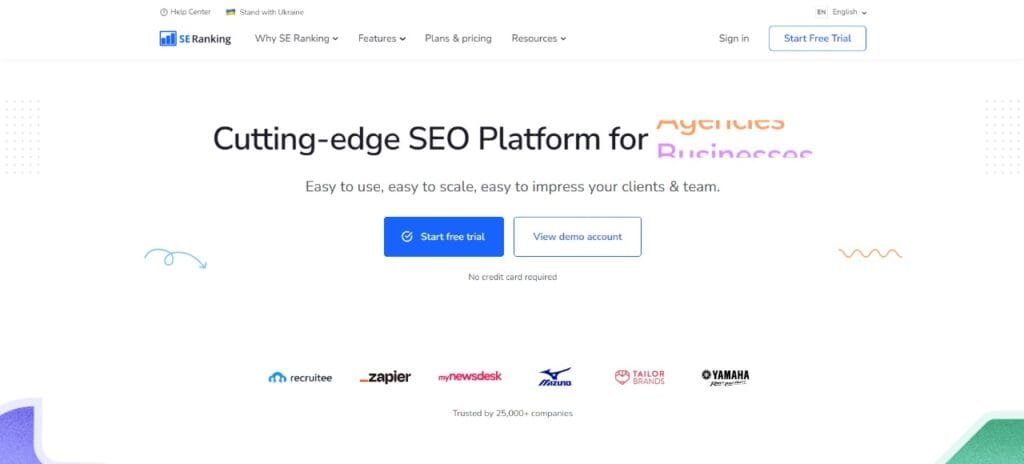
#8. SE Ranking
Features:
SE Ranking is an all-in-one SEO platform that offers competitor analysis, keyword rank tracking, website audit, backlink checker, and more. It also offers a unique “SEO Potential” feature, which gives an estimate of how much SEO traffic a site could potentially get.
Pros:
It’s versatile and caters to both beginners and professionals. The platform is frequently updated with new features and improvements.
Cons:
Some users have noted that its backlink database isn’t as comprehensive as some other tools. The sheer number of features can be overwhelming for new users.
Pricing:
Starting at $31/month for the Personal plan.
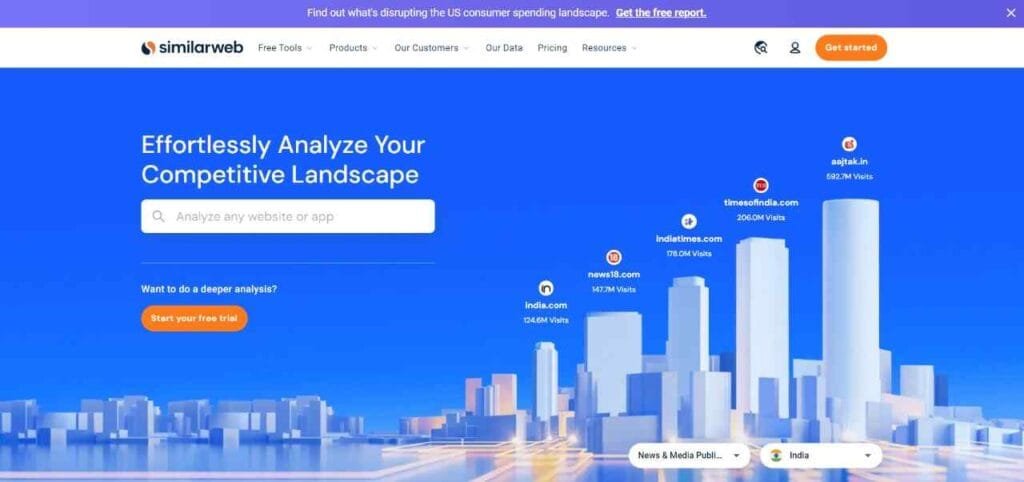
#9. SimilarWeb
Features:
SimilarWeb provides insights into website traffic and key metrics for any website, including competitor websites. It gives an overview of total visits, visit duration, bounce rates, and more.
Pros:
It offers an excellent high-level view of website performance and can provide insights into traffic sources, including direct, search, social, and referrals.
Cons:
The data can sometimes be an estimate, especially for smaller websites. It doesn’t go as in-depth into SEO metrics as some other tools.
Pricing:
Free basic insights are available, but to access the more in-depth analysis, you’ll need to contact them for custom pricing.
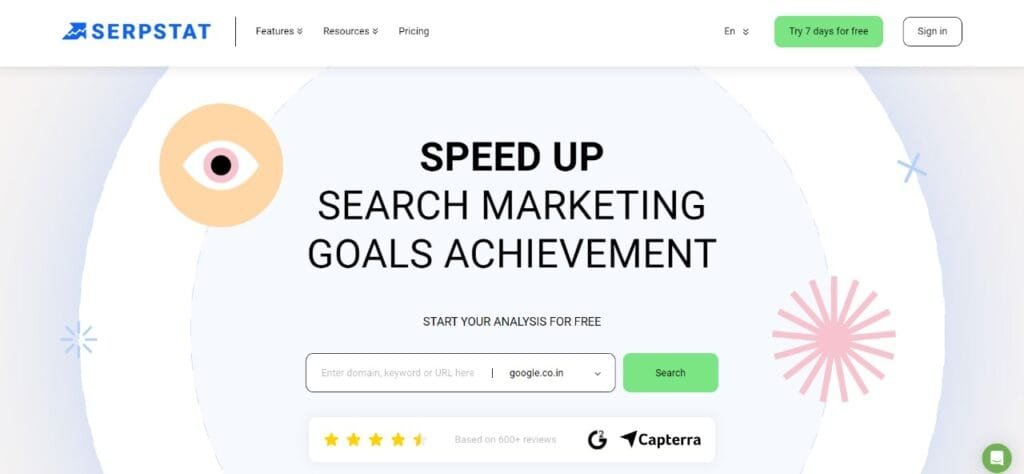
#10. Serpstat
Features:
Serpstat is another all-in-one SEO platform offering keyword research, backlink analysis, and rank tracking. Its unique selling point is its tree-view for keywords, showing you subdomains ranking for specific keywords.
Pros:
The tree-view offers insights not available in other tools. It also offers a clean and straightforward interface.
Cons:
Its keyword database, especially for less common languages and regions, might be limited compared to industry giants.
Pricing:
Plans start from $69/month for the Lite version.
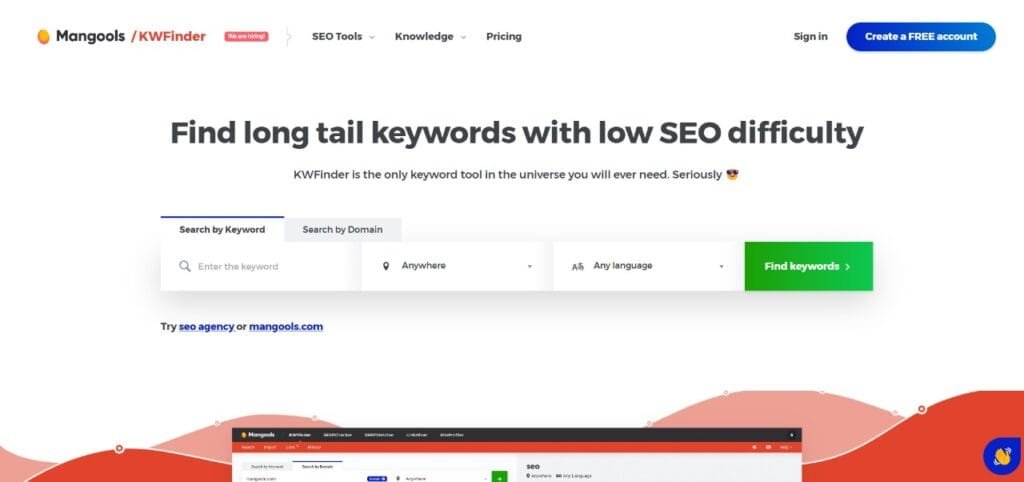
#11. KW Finder by Mangools
Features:
Part of the Mangools suite, KWFinder specializes in keyword research. It provides keyword difficulty scores, search volumes, and even historical search volume data. It also offers insights into what domains rank for specific keywords.
Pros:
Its user interface is one of the cleanest and easiest to navigate. It’s particularly good for finding long-tail keywords with low competition.
Cons:
While it’s excellent for keyword research, you might need other tools for a more comprehensive SEO competitor analysis.
Pricing:
Mangools’ basic package, which includes KW Finder, starts at $49/month.
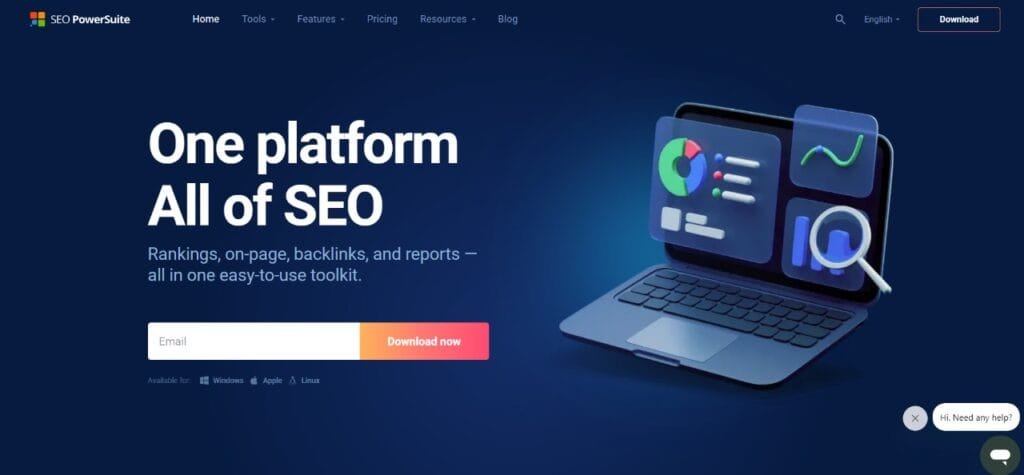
#12. SEO PowerSuite
Features:
SEO PowerSuite is a comprehensive suite of tools encompassing rank tracking, website auditing, backlink checking, and on-page SEO analysis. It’s desktop software, rather than a web-based application.
Pros:
The one-time payment option can be cost-effective in the long run. The suite is comprehensive, covering almost every aspect of SEO.
Cons:
Being a desktop application, it may not be as convenient for some users as cloud-based solutions. Also, updates might not be as frequent as some of the web-first platforms.
Pricing:
There’s a free version available, with the Professional version priced at $299 and the Enterprise version at $699.
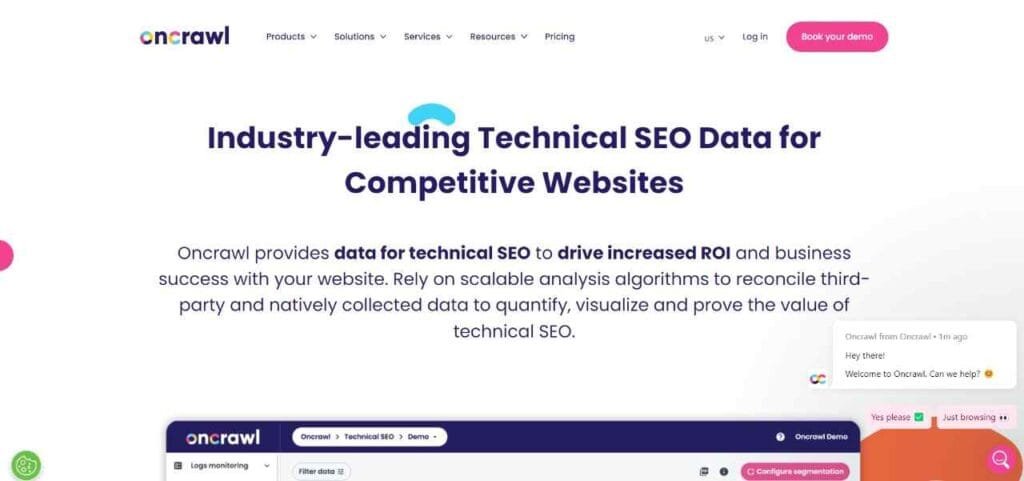
#13. OnCrawl
Features:
OnCrawl is a technical SEO platform that emphasizes site crawling and log file analysis. It offers insights into how search engines are crawling and indexing a site, identifying potential issues.
Pros:
The depth of technical insights is beneficial for large websites or those facing indexing challenges. It can also integrate with other tools and platforms for a more comprehensive view.
Cons:
It can be overkill for small sites or those just starting with SEO. Also, its primary focus is technical SEO, so users might need other tools for content or backlink analysis.
Pricing:
The OnCrawl Starter plan begins at $20/month.

#14. Clearscope
Features:
Clearscope specializes in content optimization based on competitive analysis. By entering a target keyword, it analyzes top-performing content around that keyword and provides suggestions for content enhancement.
Pros:
It’s a unique tool that bridges the gap between SEO and content creation. By focusing on content relevance, it aids in crafting content that’s both user-friendly and SEO-optimized.
Cons:
Its primary utility is content optimization. For broader SEO functionalities, other tools would be required.
Pricing:
Plans begin at $170/month for the Essential package.
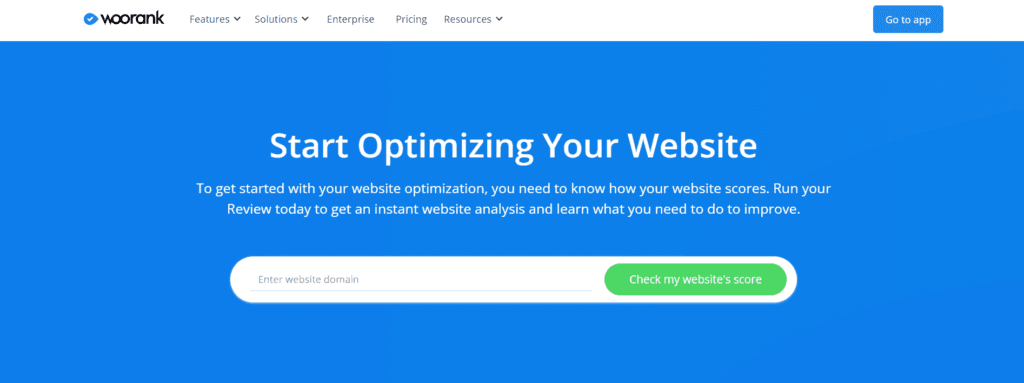
#15. Woorank
Features:
Woorank is an SEO auditing tool that can evaluate websites based on various metrics, providing insights into usability, performance, social engagement, and more. It also allows for side-by-side competitor comparisons.
Pros:
The insights are actionable, with specific recommendations on how to improve. The side-by-side comparison feature is especially useful for direct competitor analysis.
Cons:
Some users have reported its suggestions to be basic, especially if you’re an advanced SEO professional.
Pricing:
Starting from $59.99/month for the Pro plan.

Analyzing Competitor Keywords
Identifying High-Value Keywords Your Competitors Rank For
Keyword analysis forms the bedrock of SEO. Before diving deep into the creation or optimization of content, it’s essential to know where the battleground lies. High-value keywords are terms that can potentially bring a large volume of qualified traffic. By leveraging tools like Ahrefs or SEMrush, you can peek into the keyword universe of your competitors. Understand which keywords are driving their traffic, their ranking position for those keywords, and how those keywords align with their content strategy. This isn’t just about mimicking their strategy, but about identifying gaps and opportunities where you can outshine them.
Understanding Keyword Gaps and Opportunities
Keyword gaps represent areas in your content strategy where certain keywords, vital to your industry and audience, have been overlooked. By assessing which keywords your competitors rank for (that you don’t), you can discover these gaps.
Perhaps there’s a trending topic or emerging technology that you haven’t addressed, or maybe there’s a specific problem or question your audience has that you haven’t yet tackled. Understanding these gaps is a powerful step towards content optimization and SEO supremacy.
Reviewing Long-Tail Keywords and Their Potential
Short-tail keywords, like “running shoes,” might have high search volumes, but they’re also extremely competitive. Enter long-tail keywords: phrases like “best running shoes for marathons in rain.” While these might have lower search volumes, they cater to a more specific audience and can lead to higher conversion rates.
Delving into your competitors’ long-tail keyword strategy can offer insights into the niche audiences they’re targeting, enabling you to tailor your content more effectively and drive qualified traffic.
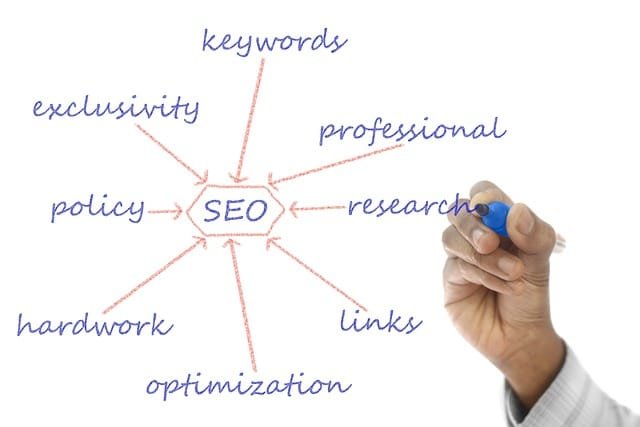
Evaluating Competitor Backlink Profiles
Understanding the Importance of Backlinks in SEO
Backlinks act as the highways connecting the digital world. They’re votes of confidence from one website to another, and search engines, especially Google, consider them as significant ranking factors. A robust backlink profile not only drives referral traffic but enhances domain authority and credibility. When assessing competitor SEO strategies, understanding their backlink landscape is pivotal. Which sites link to them? What’s the quality of those links? And most importantly, are there opportunities for you to gain similar or better links?
Tools to Analyze Competitor Backlinks: Ahrefs, Moz’s Link Explorer
While several tools provide backlink analysis, Ahrefs and Moz’s Link Explorer stand out for their depth and accuracy. Ahrefs offers an extensive link database, allowing you to inspect the backlink profile of any competitor: the websites linking to them, the anchor text used, and the overall strength of their backlink profile. Moz’s Link Explorer, on the other hand, not only offers similar insights but contextualizes them with their proprietary Domain Authority and Page Authority metrics.
Identifying Potential Link Building Opportunities
Once you understand where your competitors are getting their backlinks, you can strategize to gain similar or even better links. Maybe there’s a blog that frequently mentions your competitor but hasn’t mentioned you yet. Perhaps there are industry publications or forums where your voice hasn’t been heard. By identifying these opportunities, you can tailor your outreach and link-building strategies more effectively.
Case Study: ‘HubSpot vs. Marketo’ – Analyzing and Leveraging Backlink Strategies
Two giants in the marketing automation sphere, HubSpot and Marketo, have always been neck and neck in their SEO game. Marketo, in one of its SEO drives, utilized Ahrefs to analyze HubSpot’s backlink profile. They noticed that several industry-specific blogs and forums were regularly linking to HubSpot’s content.
Instead of merely trying to replicate this, Marketo went a step further. They initiated collaborations with these platforms, offering guest posts, webinars, and even partnerships. This not only enriched their backlink profile but deepened their industry relationships.

Reviewing Competitor Content Strategies
Content Types: Blog Posts, E-books, Videos, Infographics
Every brand has its unique voice, and the medium they choose to communicate with their audience can vary. While some businesses focus extensively on blog posts, others might channel their efforts into producing high-quality e-books, engaging videos, or illustrative infographics. By scrutinizing the content types your competitors are investing in, you gain insight into what resonates with your shared audience. This doesn’t mean you should directly mimic them, but rather discern which content types might be underrepresented in your strategy, presenting a potential avenue for differentiation and growth.
Quality of Content: Depth, Readability, Relevance
Beyond the type of content lies its quality. Does your competitor favor in-depth, long-form articles, or are they thriving with shorter, punchier posts? Tools like the Flesch-Kincaid readability test can shed light on the complexity of the competitor’s content. Moreover, evaluating the relevance of the content to current industry trends, its alignment with audience needs, and its overall depth gives a clearer picture of where you stand and where improvements are required.
Content Promotion and Distribution Tactics
Creating stellar content is just one part of the equation. The other half is ensuring that it reaches your target audience. By studying how your competitors promote their content—be it through social media channels, email newsletters, partnerships, or paid advertising—you can glean insights into potentially untapped promotional avenues. Remember, it’s not always about having better content but also about making sure it’s seen by the right eyes.
Case Study: ‘Shopify and BigCommerce’ – Contrasting Content Strategies and Their SEO Impact
Both Shopify and BigCommerce are powerhouses in the e-commerce platform sector. While Shopify frequently releases comprehensive guides and tutorials catering to e-commerce beginners, BigCommerce tends to produce deep-dive technical content addressing the needs of larger enterprises.
By doing so, each company clearly defined its target audience. Shopify also leverages influencer partnerships for content promotion, while BigCommerce heavily focuses on webinars and industry events. Their differing strategies, both successful in their own right, emphasize the importance of aligning content and promotion with the unique needs and behaviors of their audience.

Technical SEO Analysis of Competitors
Analyzing Site Structure and URL Optimizations
The structural design of a website can greatly influence its SEO. A logical, well-organized site structure ensures better crawlability for search engines and enhances user experience. Analyzing the URL structures, breadcrumb navigation, and internal linking strategies of your competitors can provide a roadmap for potential improvements in your own site. Clean, descriptive URLs, for instance, not only benefit users but also give search engines a clear indication of the page’s content.
Mobile Friendliness and Page Load Speeds
With the majority of searches now occurring on mobile devices, mobile optimization is no longer optional. Google’s mobile-first indexing emphasizes this shift. Evaluating competitors’ mobile responsiveness, design, and page load speeds can offer benchmarks against which you can measure your own site. Tools like Google’s Mobile-Friendly Test or PageSpeed Insights can be invaluable in this analysis.
Schema Markup, SSL Certificates, and Other Technical Aspects
Schema markup aids search engines in understanding the context of your content, potentially leading to rich snippets in search results. Reviewing whether competitors utilize schema can reveal opportunities for you to provide more context to search engines. Additionally, security, as highlighted by the use of SSL certificates, is vital, not just for user trust but also for search rankings. Delving into these and other technical elements, like XML sitemaps or canonical tags, gives a more comprehensive view of your competitors’ technical SEO strategies.
Case Study: ‘Airbnb vs. Vrbo’ – The Technical SEO Battle
Airbnb and Vrbo, two titans in the vacation rental market, have always been conscious of their technical SEO. While both have impeccable mobile-responsive designs, Airbnb took an edge by implementing progressive web app (PWA) features, offering an app-like experience on browsers. Vrbo, however, made strides with extensive schema markup, allowing richer display in search results. Both platforms ensure rapid load times and utilize SSL, emphasizing that in the world of technical SEO, it’s often about a combination of strategies rather than one silver bullet.
Pulling it All Together: Creating an Actionable SEO Strategy
Prioritizing Findings and Identifying Quick Wins
Having dissected your competitors’ strategies, you now sit with a wealth of information. However, it’s essential to remember that not all actions carry equal weight. Start by highlighting findings that offer the quickest wins with minimal effort. Perhaps there’s a set of keywords your competitors haven’t capitalized on or a backlink opportunity right under your nose. These immediate, low-hanging fruits can provide a momentum boost, setting the stage for longer-term strategies.
Setting Long-Term Goals Based on Competitor Analysis
Competitor analysis isn’t just about short-term tactics; it’s also about strategic direction. Having analyzed the landscape, set long-term SEO goals. For instance, if competitors are succeeding with video content and you lack in that area, perhaps a long-term goal could be establishing a strong video marketing strategy. Or, if technical SEO appears to be a significant differentiator, investing in site optimization could become a focal objective. These goals should align with business objectives, ensuring that your SEO efforts contribute to broader company ambitions.
Constant Monitoring and Adjustments
SEO isn’t static; it’s an ongoing process. Competitors will adapt, and search algorithms will evolve. As such, periodic revisits and adjustments based on competitor movements are essential. Maybe a competitor has started targeting a new demographic, or perhaps there’s been a shift in the type of content they produce. Being agile and responsive to these changes ensures you remain a step ahead.
Case Study: ‘Coca-Cola’ – Ongoing Competitor Analysis and SEO Adjustments
Coca-Cola, a behemoth in the beverage industry, is no stranger to competition. In the digital realm, they constantly monitor competitor movements.
When a competitor like Pepsi launched a new campaign focusing on “refreshing summer moments,” Coca-Cola quickly identified a rise in related search queries. In response, they subtly shifted their content strategy to incorporate similar themes, ensuring they weren’t left behind in search rankings. This continual vigilance and adaptability underscore the importance of ongoing competitor analysis and responsive SEO strategies.
Wrapping it up
Competitor analysis for SEO is a powerful tool, granting visibility into the strategies and tactics that drive success in your industry. However, the goal isn’t merely to mimic but to derive insights, identify gaps, and sculpt a unique, effective SEO strategy that resonates with your brand and audience.
By continually monitoring the landscape, prioritizing actions, and aligning with broader business objectives, you can stay ahead of the curve and ensure that your digital presence is both robust and dynamic.
Read Next:
- How to use Leadpages: An Explainer
- 29+ Digital Analytics Software to Skyrocket Your Digital ROI
- 15 Best Sales Acceleration Tools to Skyrocket Your Sales!
- Data Processing Agreement: An International Perspective
- Role of M&A in Corporate Growth Strategies






















Comments are closed.